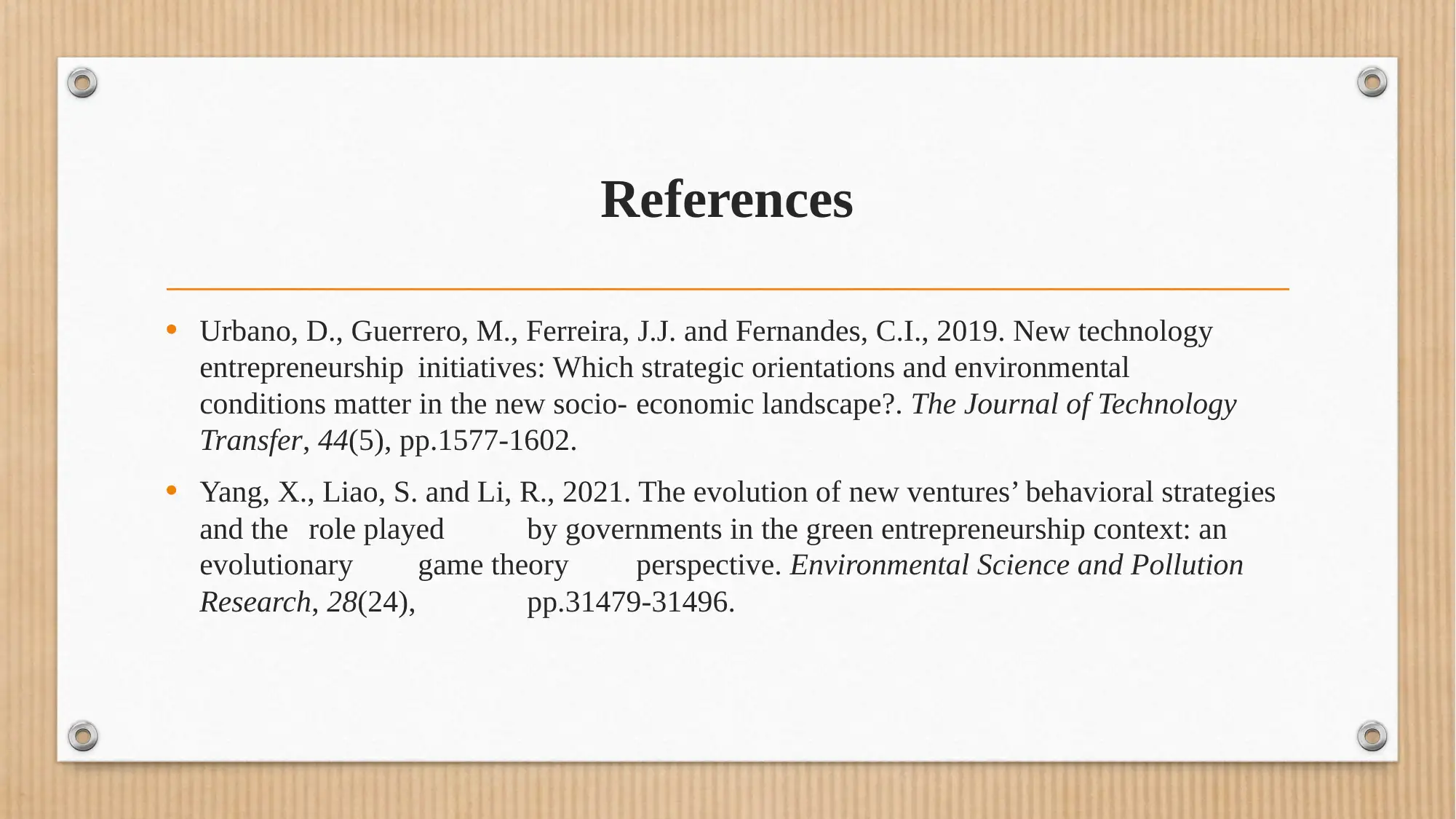Analysis of SME Impact and Intrapreneurship in the UK Economy
VerifiedAdded on 2023/06/10
|12
|751
|126
Report
AI Summary
This report examines the significant impact of Small and Medium Enterprises (SMEs) on the UK economy, utilizing relevant data and statistics to illustrate their influence at local, national, regional, and international levels. It delves into the concept of intrapreneurship, highlighting its role in creating competitive advantages within both public and corporate organizations in the UK context. The report differentiates between public and corporate intrapreneurship, emphasizing the importance of intrapreneurship in generating new revenue streams and fostering innovation. Furthermore, it compares and contrasts commercial and social entrepreneurs, concluding with a discussion on the positive entrepreneurial mindset and the overall contributions of SMEs to economic growth. The report includes references to scholarly articles supporting its findings.

Section 2
Unit-9 Entrepreneurial Ventures
Unit-9 Entrepreneurial Ventures
Paraphrase This Document
Need a fresh take? Get an instant paraphrase of this document with our AI Paraphraser

Content
• Introduction
• Using relevant data and statistics, assess the impact of
different SMEs on the UK economy in different level
• Intrapreneurship creates competitive advantages
• Intrapreneurship creates competitive advantages in both
public and corporate organization in the UK context
• References
• Introduction
• Using relevant data and statistics, assess the impact of
different SMEs on the UK economy in different level
• Intrapreneurship creates competitive advantages
• Intrapreneurship creates competitive advantages in both
public and corporate organization in the UK context
• References

Introduction
• The term entrepreneurship is related to an individual in
which they creates or produce new and innovative
products.
• Their main is to make a appropriate change in the
society where they are working. an entrepreneur is the
one who is able to make the complete use of their
knowledge and skills in order to enhance the business
productivity.
• The term entrepreneurship is related to an individual in
which they creates or produce new and innovative
products.
• Their main is to make a appropriate change in the
society where they are working. an entrepreneur is the
one who is able to make the complete use of their
knowledge and skills in order to enhance the business
productivity.
⊘ This is a preview!⊘
Do you want full access?
Subscribe today to unlock all pages.

Trusted by 1+ million students worldwide

Using relevant data and statistics, assess the impact of
different SMEs on the UK economy in different level
• There were 5.5 million small enterprises (with 0 to 49
employees) at the start of 2021, accounting for 99.2 percent of
all businesses. Smes make up 99.9% of the total business
population (5.5 million businesses).
• In the UK private sector, SMEs employ three-fifths of the
workforce and generate roughly half of all revenue.
• SMEs employed 16.3 million people (61 percent of the overall
workforce), with a turnover of £2.3 trillion (52 percent ).
different SMEs on the UK economy in different level
• There were 5.5 million small enterprises (with 0 to 49
employees) at the start of 2021, accounting for 99.2 percent of
all businesses. Smes make up 99.9% of the total business
population (5.5 million businesses).
• In the UK private sector, SMEs employ three-fifths of the
workforce and generate roughly half of all revenue.
• SMEs employed 16.3 million people (61 percent of the overall
workforce), with a turnover of £2.3 trillion (52 percent ).
Paraphrase This Document
Need a fresh take? Get an instant paraphrase of this document with our AI Paraphraser

Continue
• Local level- It has been determined that micro and small scale businesses can
assist in the creation of employment opportunities because the establishment of
enterprises can provide jobs for the local population in a certain country.
• National level- Small and medium-sized businesses contribute to society's
development by establishing numerous ventures that generate more revenue at the
national level.
• Local level- It has been determined that micro and small scale businesses can
assist in the creation of employment opportunities because the establishment of
enterprises can provide jobs for the local population in a certain country.
• National level- Small and medium-sized businesses contribute to society's
development by establishing numerous ventures that generate more revenue at the
national level.

Continue
• Regional level- Economic development will occur as a result of increased job
opportunities, which will have an impact on area business organisations and
accelerate their expansion.
• Internationally- Small and medium-sized businesses have a huge impact on the
international economy because international market opportunities are increasing.
• Regional level- Economic development will occur as a result of increased job
opportunities, which will have an impact on area business organisations and
accelerate their expansion.
• Internationally- Small and medium-sized businesses have a huge impact on the
international economy because international market opportunities are increasing.
⊘ This is a preview!⊘
Do you want full access?
Subscribe today to unlock all pages.

Trusted by 1+ million students worldwide

Intrapreneurship creates competitive advantages in
both public and corporate organization in the UK
context
• Public Intrapreneurship-
A public Intrapreneurship entrepreneur is a person who sells products and services that meet basic
human needs.
• Corporate Intrapreneurship-
This is a type of Intrapreneurship in which a company is formed with the goal of leveraging existing
raw materials, natural resources, and technologies.
both public and corporate organization in the UK
context
• Public Intrapreneurship-
A public Intrapreneurship entrepreneur is a person who sells products and services that meet basic
human needs.
• Corporate Intrapreneurship-
This is a type of Intrapreneurship in which a company is formed with the goal of leveraging existing
raw materials, natural resources, and technologies.
Paraphrase This Document
Need a fresh take? Get an instant paraphrase of this document with our AI Paraphraser

Intrapreneurship creates competitive advantages in
both public and corporate organization in the UK
context
• Public Intrapreneurship-
A public Intrapreneurship entrepreneur is a person who sells products and services that meet basic
human needs.
• Corporate Intrapreneurship-
This is a type of Intrapreneurship in which a company is formed with the goal of leveraging existing
raw materials, natural resources, and technologies.
both public and corporate organization in the UK
context
• Public Intrapreneurship-
A public Intrapreneurship entrepreneur is a person who sells products and services that meet basic
human needs.
• Corporate Intrapreneurship-
This is a type of Intrapreneurship in which a company is formed with the goal of leveraging existing
raw materials, natural resources, and technologies.

Importance of Intrapreneurship
• Intrapreneurship assists businesses in generating new revenue streams.
• Intrapreneurship is one of the finest methods to attract and retain
entrepreneurial leaders because it creates an atmosphere that supports and
sustains innovation over time.
• Intrapreneurship assists businesses in generating new revenue streams.
• Intrapreneurship is one of the finest methods to attract and retain
entrepreneurial leaders because it creates an atmosphere that supports and
sustains innovation over time.
⊘ This is a preview!⊘
Do you want full access?
Subscribe today to unlock all pages.

Trusted by 1+ million students worldwide

Similarities and Differences
Similarities
• Both types of entrepreneurs, such as
commercial and social entrepreneurs, have
distinct working visions and missions.
• Both sorts of entrepreneurs have the power
and capacity to inspire and motivate their
staff to work hard in order to achieve their
organization's objectives.
Differences
• The primary goal and purpose of a social
entrepreneur is to effect positive change in
society by fixing numerous negative
situations using suitable knowledge and
abilities.
• They are the ones who, rather than earning
money, take the initiative to work for their
personal beliefs.
Similarities
• Both types of entrepreneurs, such as
commercial and social entrepreneurs, have
distinct working visions and missions.
• Both sorts of entrepreneurs have the power
and capacity to inspire and motivate their
staff to work hard in order to achieve their
organization's objectives.
Differences
• The primary goal and purpose of a social
entrepreneur is to effect positive change in
society by fixing numerous negative
situations using suitable knowledge and
abilities.
• They are the ones who, rather than earning
money, take the initiative to work for their
personal beliefs.
Paraphrase This Document
Need a fresh take? Get an instant paraphrase of this document with our AI Paraphraser

Conclusion
The positive entrepreneurial mindset is been discussed in this report. At last,
how small and macro industries can impact the local, national, and
international economy is been included in this project.
The positive entrepreneurial mindset is been discussed in this report. At last,
how small and macro industries can impact the local, national, and
international economy is been included in this project.

References
• Urbano, D., Guerrero, M., Ferreira, J.J. and Fernandes, C.I., 2019. New technology
entrepreneurship initiatives: Which strategic orientations and environmental
conditions matter in the new socio- economic landscape?. The Journal of Technology
Transfer, 44(5), pp.1577-1602.
• Yang, X., Liao, S. and Li, R., 2021. The evolution of new ventures’ behavioral strategies
and the role played by governments in the green entrepreneurship context: an
evolutionary game theory perspective. Environmental Science and Pollution
Research, 28(24), pp.31479-31496.
• Urbano, D., Guerrero, M., Ferreira, J.J. and Fernandes, C.I., 2019. New technology
entrepreneurship initiatives: Which strategic orientations and environmental
conditions matter in the new socio- economic landscape?. The Journal of Technology
Transfer, 44(5), pp.1577-1602.
• Yang, X., Liao, S. and Li, R., 2021. The evolution of new ventures’ behavioral strategies
and the role played by governments in the green entrepreneurship context: an
evolutionary game theory perspective. Environmental Science and Pollution
Research, 28(24), pp.31479-31496.
⊘ This is a preview!⊘
Do you want full access?
Subscribe today to unlock all pages.

Trusted by 1+ million students worldwide
1 out of 12
Related Documents
Your All-in-One AI-Powered Toolkit for Academic Success.
+13062052269
info@desklib.com
Available 24*7 on WhatsApp / Email
![[object Object]](/_next/static/media/star-bottom.7253800d.svg)
Unlock your academic potential
Copyright © 2020–2025 A2Z Services. All Rights Reserved. Developed and managed by ZUCOL.





